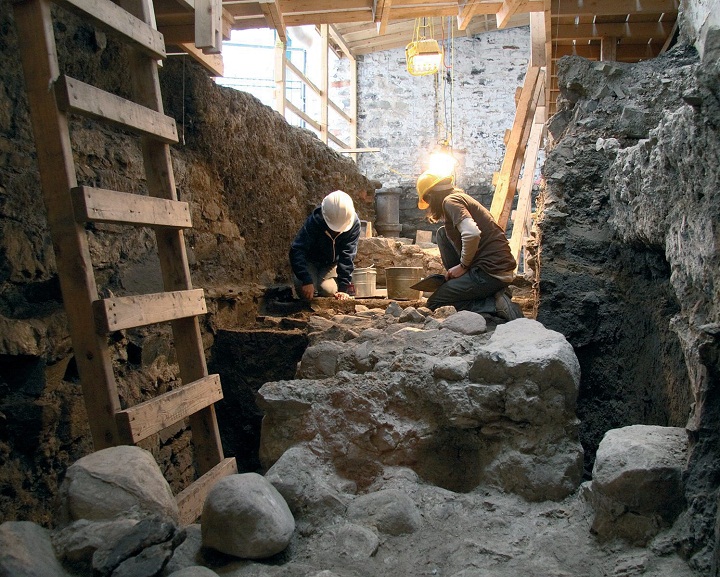MONTREAL — Construction has resumed at the site of a Montreal office tower after an archeological survey put to rest any concerns there were indigenous artifacts in the ground below.

Ivanhoe Cambridge stopped excavation work in mid-February after citizen concerns the site might contain artifacts linked to the Dawson archeological site, remnants of an ancient Iroquois village discovered in 1859.
The real-estate arm of Quebec’s pension fund manager, the Caisse de depot et placement, said in a statement Monday a survey has given it the all-clear to continue building the 27-storey Maison Manuvie office tower.
Ivanhoe commissioned the study despite having proper permits that said the project was outside any designated archeological zones.
Why is the site important?
The Dawson excavation site is considered a potential site of the Iroquois village of Hochelaga as described by Jacques Cartier during his second trip in 1535.
The village near Mount Royal was located in present-day Montreal, although its exact location remains unknown.
The Dawson site has historical resonance for many, said Andre Costopoulos, a McGill University anthropology professor.
“The finds that were made there are still quite important in understanding what happened in the St-Lawrence Valley in late pre-history.”
The chances of finding Hochelaga are fairly remote.
“The more development on the island, the fewer candidate sites remain undisturbed.”
The survey, conducted by the firm Archeotec, said the soils were stripped during road and infrastructure construction in the 19th and 20th, leaving little to unearth.
“In particular, the surface soils that could conceal archaeological elements connected to site are clearly not there,” the firm said.
Robert Galbraith, a freelance photographer who sounded the alarm, said he’s not surprised by the results, but believes better care should be taken given the increase in construction.
“If we took for granted every time we built in a sensitive area of heritage concern, we would never have anything left,” Galbraith said.
The office tower will house Manulife employees following that company’s $4-billion acquisition of Standard Life Canada last September.



Comments